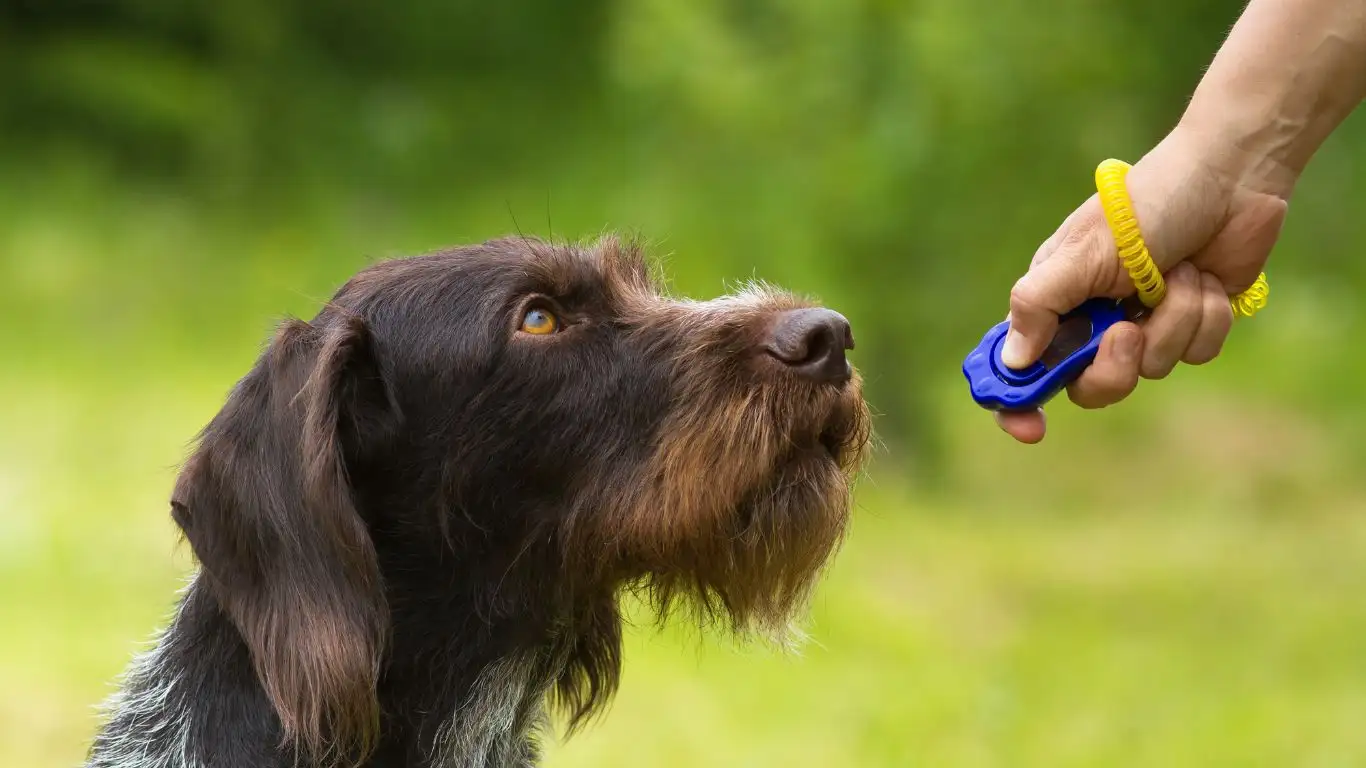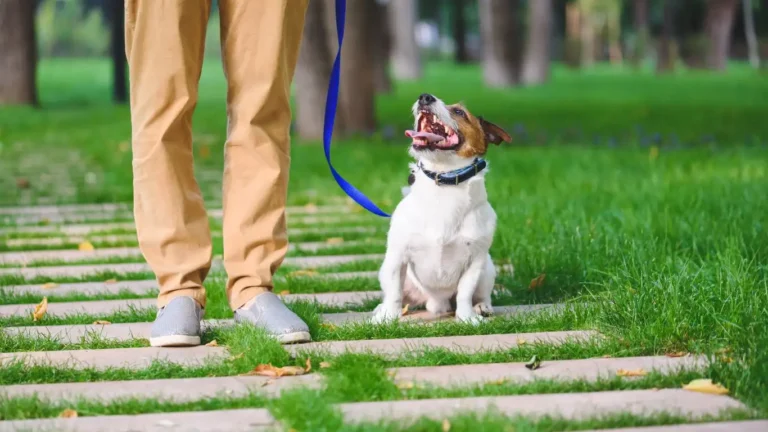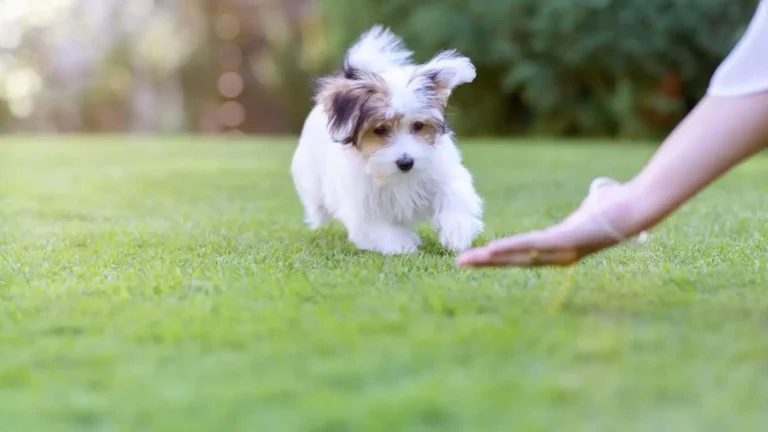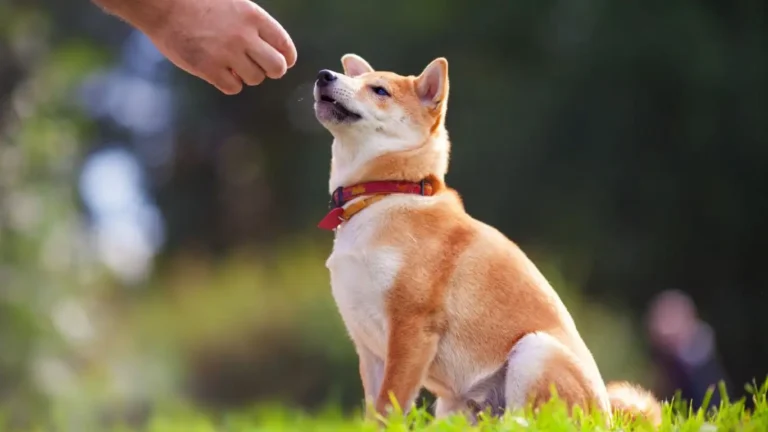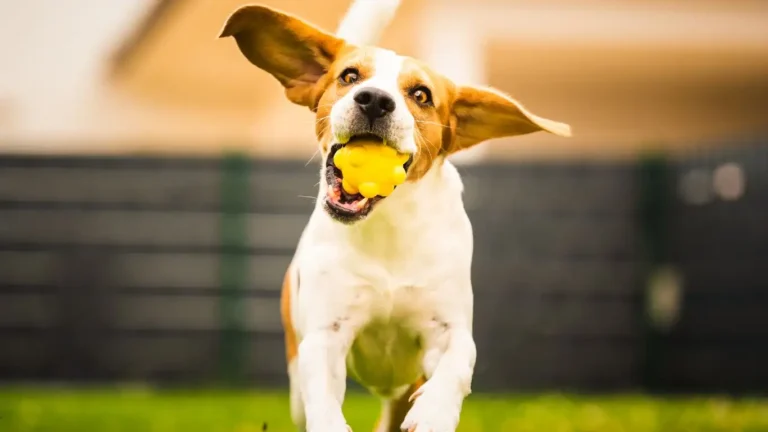How to Train Your Dog to Stay Off Kitchen Counters – Simple Tips that Work
Training your dog to stay off kitchen counters is one of the most common challenges pet parents face. As a Certified Professional Dog Trainer, I’ve worked with countless dogs and their owners to address this behavior. The good news? It’s absolutely possible to teach your dog to keep their paws off those countertops – with some patience, consistency, and the right techniques. Whether you’re dealing with a dog who loves to snatch food off the counter or one who simply enjoys exploring high places, this guide will walk you through how to train a dog to stay off kitchen counters using positive reinforcement methods and clear boundaries.
Understanding Why Dogs Jump on Kitchen Counters

Before we dive into the how-to, it’s essential to understand the why. Why do dogs jump up on the kitchen counter in the first place? There are a few possible reasons, and knowing these will help you address the root cause of the behavior.
Curiosity and Exploration
Dogs are naturally curious animals. Puppies especially are known for exploring their surroundings, and countertops can seem like a treasure trove of new smells, tastes, and objects. If your dog is still learning about their environment, jumping on the counter might simply be an attempt to explore their world.
Food Motivation
Let’s face it – food is one of the biggest motivators for most dogs. If your dog has successfully stolen food off the counter in the past, they’ve likely learned that the kitchen is a place to find tasty treats. They might be jumping up there in hopes of finding something to snack on. In fact, if your dog has been rewarded with food for jumping on the counter even once, they may be more likely to repeat the behavior.
Attention-Seeking Behavior
Another common reason dogs jump on counters is for attention. If your dog jumps up, and you react (even if it’s to tell them ‘no’ or push them down), they might see this as a form of attention, which reinforces the behavior. It’s important to remember that attention, whether positive or negative, can act as a reward.
Setting Up for Success: Creating the Right Environment
Before you begin any training, it’s important to set up your home environment for success. This involves removing temptations and ensuring your dog can’t “practice” jumping up on counters when you’re not around.
Clear the Countertops
Start by keeping your countertops free of food or anything that might attract your dog. Make sure that there is nothing for your dog to “discover” while they are unsupervised. This includes dishes, crumbs, or even non-food items that could grab their attention. A clear counter is an essential first step to preventing counter-surfing.
Use Baby Gates or Barriers
If you can’t keep your dog out of the kitchen entirely, consider using baby gates or other barriers to restrict their access. This can be particularly helpful during the initial stages of training when your dog is still learning the boundaries. If your dog can’t get into the kitchen to practice the unwanted behavior, it gives you the chance to reinforce the proper training and build new habits.
Manage Your Dog’s Environment
Consider supervising your dog closely, especially in the kitchen area. This means keeping an eye on them during meal prep, while you’re cooking, and when there’s food on the counter. One key thing I always tell my clients is: if you can’t supervise, you need to manage! Using a leash indoors, especially in the kitchen, can help you redirect them away from the counter before they make the jump. It’s also a great way to teach them self-control.
Training Your Dog to Stay Off the Counter: Step-by-Step Guide

Now, let’s get into the meat of the training – teaching your dog to stay off the counter. I always recommend using positive reinforcement, which means rewarding your dog for good behavior rather than punishing them for mistakes. Here’s a step-by-step guide to get you started:
Step 1: Teach a Solid ‘Off’ Command
The first step in training your dog to stay off the kitchen counters is to teach them a solid ‘off’ command. This is an important command for many situations, including getting your dog off the counter. To teach it, start by saying “off” and gently guiding your dog down from the counter. As soon as all four paws are on the ground, reward them with praise and a treat. Consistency is key when it comes to this command, so make sure to repeat it every time your dog jumps up on the counter.
Step 2: Redirect with Positive Reinforcement
Whenever your dog tries to jump on the counter, you want to redirect them to something more appropriate. For example, you could teach them to go to a mat or bed on the floor instead. Use a word like “place” or “bed” and reward them when they follow your cue. This redirection can help your dog understand what you want them to do instead of jumping up on the counter.
Step 3: Use Management Tools
While you’re in the process of training, management tools like a leash or crate can be a big help. When your dog is on a leash indoors, you have more control over their movements, which makes it easier to redirect them if they head for the counter. If you’re not able to supervise, crating your dog can help prevent counter-surfing when you’re not around to catch them in the act.
Step 4: Be Patient and Consistent
As with any dog training, patience is crucial. Your dog might not get it right away, and that’s okay! With consistent training and plenty of positive reinforcement, they’ll begin to learn that staying off the kitchen counter gets them rewards. Celebrate the small victories, and keep the sessions short, fun, and positive.
What to Do When Your Dog Makes a Mistake

Even with the best training, your dog might still make mistakes along the way. If your dog jumps on the counter when you’re not looking or when you’re not in the room, don’t panic or punish them. Remember, it’s about setting your dog up for success by providing a clear, consistent environment. If a mistake happens, simply redirect them and continue the training process. It’s essential to stay calm and avoid reacting too harshly – your dog is learning, and mistakes are part of the journey!
Addressing Counter-Surfing in Different Dog Breeds
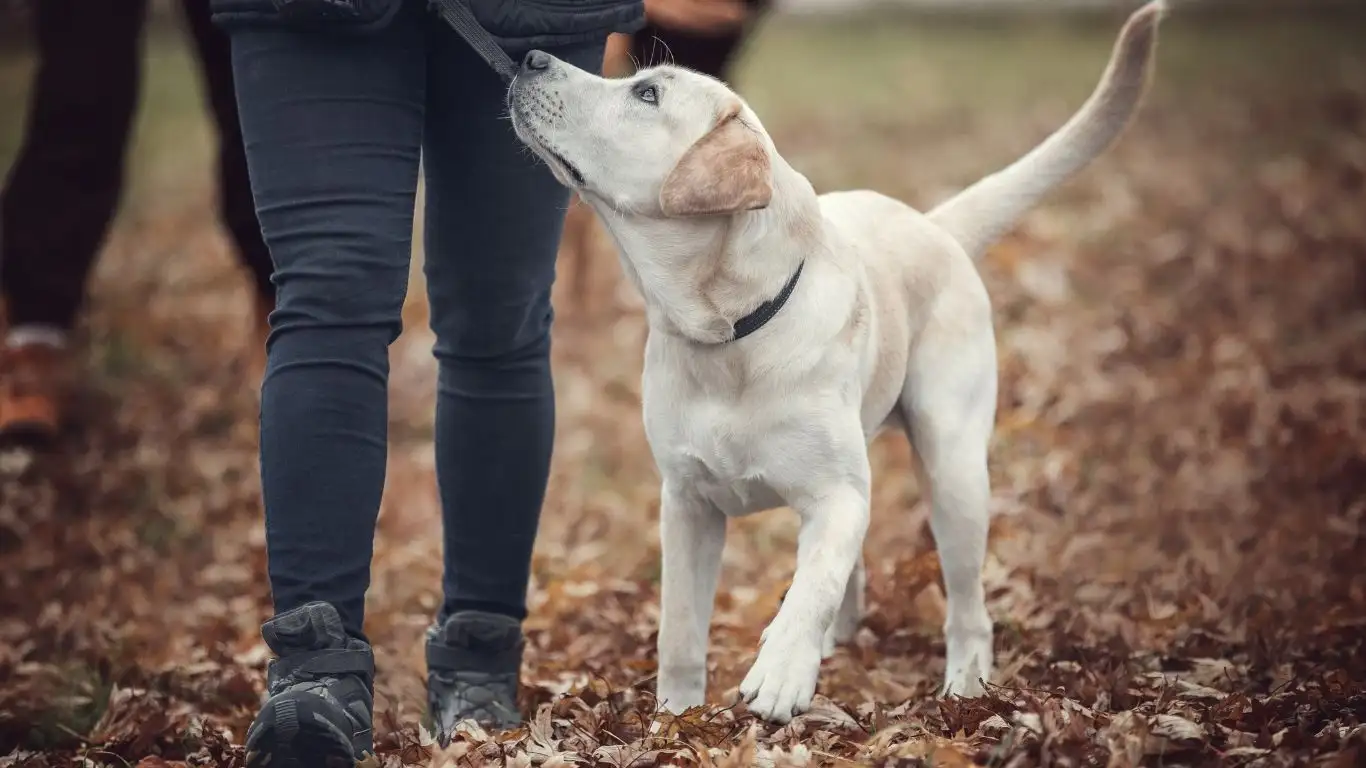
Not all dogs are created equal, and this applies to their tendencies to jump on counters too. Some breeds are more prone to counter-surfing than others due to their natural instincts, energy levels, and food-driven behaviors. It’s important to consider your dog’s breed and personality when addressing this behavior.
High-Energy Dogs and Counter-Surfing
Breeds like Border Collies, Labrador Retrievers, and Jack Russell Terriers are known for their high energy and curiosity. These dogs are naturally more motivated to explore, which can translate to a higher chance of counter-surfing. For these dogs, training needs to include plenty of exercise and mental stimulation. A dog who’s tired (both physically and mentally) is less likely to engage in counter-surfing out of boredom.
Food-Driven Breeds
Some dogs, like Beagles, Pugs, and Dachshunds, are extremely food-motivated. These breeds are more likely to counter-surf simply because they smell something delicious. In these cases, it’s crucial to be extra vigilant about keeping food off the counter and teaching a solid ‘leave it’ or ‘off’ command. With food-driven dogs, the key is to work on impulse control and self-regulation through positive reinforcement methods, so they learn that good things come when they don’t jump up on the counter.
Smaller Dogs and Counter-Surfing
Don’t be fooled by small breeds – they’re just as capable of jumping on counters as larger dogs! Small dogs like Chihuahuas, Shih Tzus, and Yorkies might be able to reach the counter without much effort, especially in homes where furniture is positioned close to the kitchen. In these cases, you may need to make sure that furniture is arranged in a way that prevents your dog from using it as a springboard. Additionally, small dogs can develop strong “small dog syndrome,” where they think they can get away with behaviors that larger dogs wouldn’t even attempt. It’s important to stay consistent with training and not let their size be an excuse for bad behavior.
Using Positive Reinforcement to Strengthen Training
As a dog trainer, one of the biggest things I emphasize is using positive reinforcement to shape your dog’s behavior. Training your dog to stay off the kitchen counters isn’t about punishment – it’s about teaching them the right behaviors through rewards and consistency.
Why Positive Reinforcement Works
Positive reinforcement is the process of rewarding desirable behaviors, which increases the likelihood of those behaviors happening again. When it comes to counter-surfing, the key is to reward your dog every time they make the right decision, like staying on the floor or choosing to go to their bed. This could mean giving them a tasty treat, a toy, or verbal praise like “Good job!” or “Yes!” when they listen to your command.
Consistency and Timing Matter
Timing is everything with positive reinforcement. If your dog jumps on the counter and you give them a treat five minutes later, it won’t make any sense to them. You want to reward the behavior immediately after they perform the correct action. The faster your dog receives the reward, the better they’ll understand what they did right. And remember, consistency is crucial. If you allow your dog to jump on the counter sometimes, they’ll get confused about when it’s okay and when it’s not.
Using Treats and Praise Wisely
Another tip I always share with clients is to be strategic about using treats and praise. Over time, you can start to phase out the treats and use praise as a reward. This helps your dog learn that good behavior is rewarding in itself. However, early on in the training process, using high-value treats is key to keeping your dog motivated and focused. Find something your dog really loves – whether it’s a special training treat or a favorite toy – and use it as a reward to reinforce their good behavior.
Common Mistakes to Avoid When Training Your Dog

When it comes to training your dog to stay off kitchen counters, there are a few common mistakes I see time and time again. These mistakes can slow down the training process or make it harder for your dog to understand what you want. Let’s take a look at some of these pitfalls and how to avoid them.
Inconsistent Rules
One of the most common mistakes is not being consistent with the rules. If you allow your dog on the counter sometimes but not others, they’ll get mixed signals. Dogs thrive on consistency, so it’s essential to have clear, non-negotiable rules. For example, if jumping on the counter is not allowed, it should never be allowed, no matter how cute or how “just this once” it seems. The more consistent you are, the quicker your dog will catch on.
Reinforcing the Wrong Behavior
Sometimes, owners unintentionally reinforce the wrong behavior. If your dog jumps on the counter and you give them attention – even if it’s scolding – you’re still giving them what they want: your attention. It’s important to only reward the behavior you want to see more of, and if they’re doing something you don’t want, you should ignore it or redirect them to the correct behavior. Remember, negative attention can sometimes be just as reinforcing as positive attention.
Not Training Other Family Members
If everyone in your household isn’t on the same page with training, your dog can get confused. One person might be enforcing the “no counter-surfing” rule, while another might be giving in to their puppy-dog eyes. This inconsistency can cause setbacks in training. Make sure all family members and anyone who interacts with your dog understands the rules and is consistent in applying them.
Keeping the Long-Term Training Going
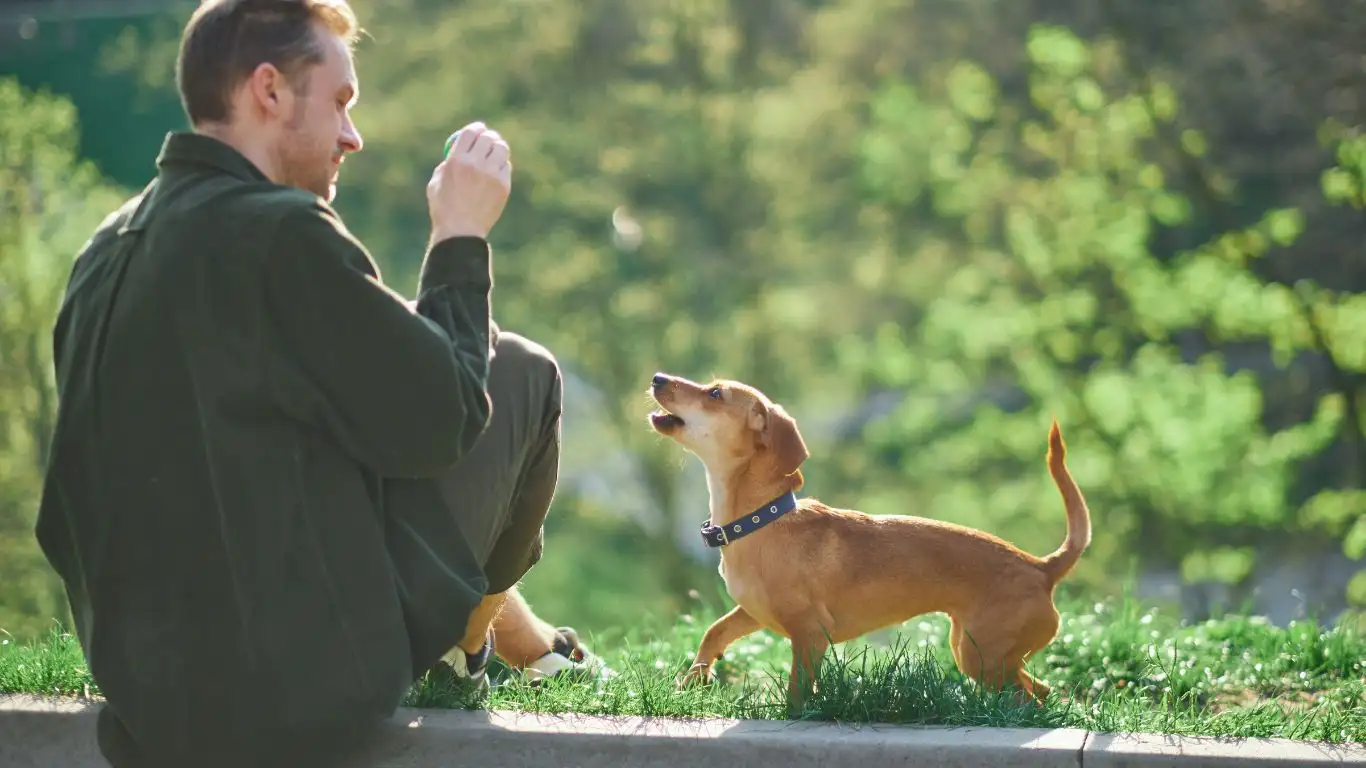
Once your dog has learned to stay off the kitchen counter, the work doesn’t stop there. You want to make sure that the training sticks long-term. This means reinforcing the behavior regularly and being proactive in preventing opportunities for your dog to slip up.
Ongoing Training and Refreshers
Even after your dog has mastered staying off the counter, it’s important to keep reinforcing the behavior with occasional refreshers. Continue to reward them when they follow your cues, and don’t forget to keep the counters clear of food and tempting items. Just like with any other behavior, repetition and consistency will help solidify the lesson.
Maintaining Clear Boundaries
As time goes on, it’s easy to let boundaries slip – especially if your dog has been good for a while. Make sure to continue setting clear expectations and prevent counter-surfing from becoming a habit again. Even if you think your dog has “outgrown” the behavior, it’s always a good idea to reinforce the rules every now and then.
Case Studies & Real-Life Examples

Let’s talk about some real-life examples of dogs who’ve successfully learned to stay off the kitchen counters. Sometimes, hearing about others’ experiences can make a big difference in understanding how the process works. These stories will help you see how consistency, patience, and the right techniques can really pay off in the end.
Case Study 1: Daisy, the Food-Loving Golden Retriever
Daisy, a sweet Golden Retriever, was an absolute food magnet. Her family was constantly finding her on the counter, even though they had tried several methods to stop the behavior. It wasn’t until we started using a combination of boundary setting (keeping the kitchen door closed when no one was around) and introducing a consistent “off” command that we started seeing progress. The family was diligent about rewarding Daisy every time she stayed on the floor, and with time, Daisy learned to stay off the counter. Eventually, they were able to leave the kitchen open without worrying about her counter-surfing habits.
Case Study 2: Max, the Mischievous Mini Schnauzer
Max was a tricky case because he was so small and agile. His family didn’t think he could even reach the counter until one day they walked into the kitchen and found him on top of it, nosing through a pile of bread crumbs. I worked with them on setting up a system of reward-based training using a “place” command. They reinforced Max’s bed as his safe place when in the kitchen, and it only took a couple of weeks before Max knew that the bed was his place to be when the family was cooking. He went from a counter-surfer to a well-behaved pup, simply by having clear rules and structure in place.
Key Takeaways: What You Need to Remember
As we wrap up this guide, I want to share the key takeaways that will help you train your dog to stay off kitchen counters. These are the golden rules that can make or break your success:
- Consistency is key. Dogs learn through repetition and consistency. If you’re not consistent with the rules, your dog will get confused.
- Positive reinforcement works wonders. Rewarding your dog for good behavior is the most effective way to encourage them to continue following the rules.
- Set clear boundaries. Be sure that everyone in your household is on the same page when it comes to the rules for the kitchen.
- Patience, patience, patience! Behavior change takes time. Don’t expect your dog to learn everything overnight.
- Remove temptations. Make sure your countertops are clean and free of food that could entice your dog to jump up.
FAQs
Here are some common questions I get asked by dog owners about training their dog to stay off kitchen counters:
1. My dog keeps jumping on the counter when I’m not looking. How do I stop this?
This is a common issue, and it can be tackled by preventing your dog from having unsupervised access to the kitchen. Use baby gates or close doors to keep your dog out of the kitchen when you’re not home. If your dog is already in the habit of jumping on the counter, redirecting their energy with a different activity or command when they are caught in the act is crucial.
2. Can I use punishment to stop my dog from counter-surfing?
It’s tempting to use punishment when your dog is being naughty, but it’s not the most effective way to solve this problem. Punishment can cause fear and anxiety, which may lead to more behavioral problems. Instead, focus on reinforcing good behavior and setting clear, positive boundaries. Your dog will respond better to positive reinforcement.
3. How long will it take to train my dog to stay off the counter?
The timeline for training can vary depending on your dog’s age, breed, and temperament. Some dogs might pick up on the training in just a few weeks, while others may need more time. Stay consistent and patient, and your dog will eventually learn the boundaries.
Bonus: Additional Resources or DIY Tips
If you’re looking for more ways to keep your dog off the kitchen counter, here are some bonus tips and resources that can help:
- Interactive Toys: Keep your dog mentally engaged while you’re in the kitchen by offering them interactive toys or puzzle feeders. This will help distract them and reduce the desire to jump on the counter.
- Training Classes: If you’re struggling to train your dog on your own, consider enrolling them in a group obedience class. This can help reinforce good behavior and allow your dog to socialize with others.
- Use Deterrents: Some owners have found success with products like motion-activated air cans or special mats that make the counter less appealing to dogs.
Appendix: Table, References, Disclaimer, and Call to Action
References: For more information on dog training and counter-surfing, check out these helpful links:
Disclaimer: This article is intended for informational purposes only. While the tips and techniques provided here are based on my professional experience as a Certified Professional Dog Trainer, results may vary depending on your dog’s temperament, age, and other factors. Always consult a professional trainer if you need personalized guidance.
Call to Action: Ready to take your dog’s training to the next level? Start implementing the tips in this article today and remember that training takes time, consistency, and patience. If you need help, don’t hesitate to reach out to a professional dog trainer for guidance!
